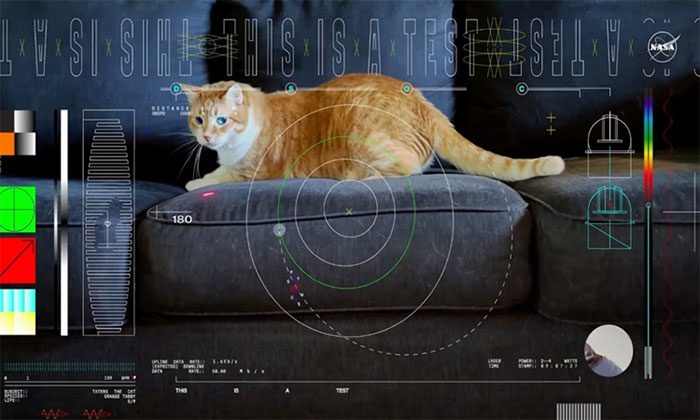For the First Time, NASA Transmits High-Resolution Video from Deep Space to Earth via Laser in Experiment on the Psyche Spacecraft.
Video of the cat Taters was transmitted over a distance of 31 million km. (Video: Space)
On December 11, The Deep Space Optical Communications Experiment (DSOC) from NASA’s Jet Propulsion Laboratory (JPL) transmitted ultra-high-resolution video of a cat named Taters chasing a laser pointer from a distance of 31 million km. This experiment took place aboard NASA’s Psyche spacecraft, which is currently en route to 16 Psyche, a metallic asteroid located in the main asteroid belt between Mars and Jupiter, having launched on SpaceX’s Falcon Heavy rocket on October 13.
NASA officials stated that this experiment lays the groundwork for future deep space exploration. “Increasing bandwidth is essential to meet future scientific and exploratory goals. We aim to continue the achievements of this groundbreaking technology and transform communication for interplanetary missions,” shared Pam Melroy, NASA’s Deputy Administrator.
The video of Taters was transmitted using a new device developed by JPL called a laser transceiver in flight. This device sends near-infrared laser light to the Hale Telescope at the Palomar Observatory of the California Institute of Technology. The signal took 101 seconds to reach Earth at a speed of 267 megabits per second (Mbps). In comparison, the average bandwidth speed in the U.S. is about 219 Mbps, while in the UK, it is 92 Mbps.

The experiment took place aboard NASA’s Psyche spacecraft currently en route to 16 Psyche.
“Despite transmitting from a distance of tens of millions of kilometers, the system can transmit video faster than most Internet connections,” stated Ryan Rogalin, the electronics signal reception scientist for the project. “In fact, after receiving the video at Palomar, it was sent to JPL via the Internet, and that connection was slower than the signal coming from deep space.”
The laser transceiver in flight conducted its first test in November, transmitting signals to Earth from a distance of 16 million km. Most of the signals it used in previous tests were random data packets.
Psyche will fly past Mars in 2026 and capture several images of the Red Planet. From there, the spacecraft will head to its primary target, 16 Psyche, expected to arrive in 2029.


















































